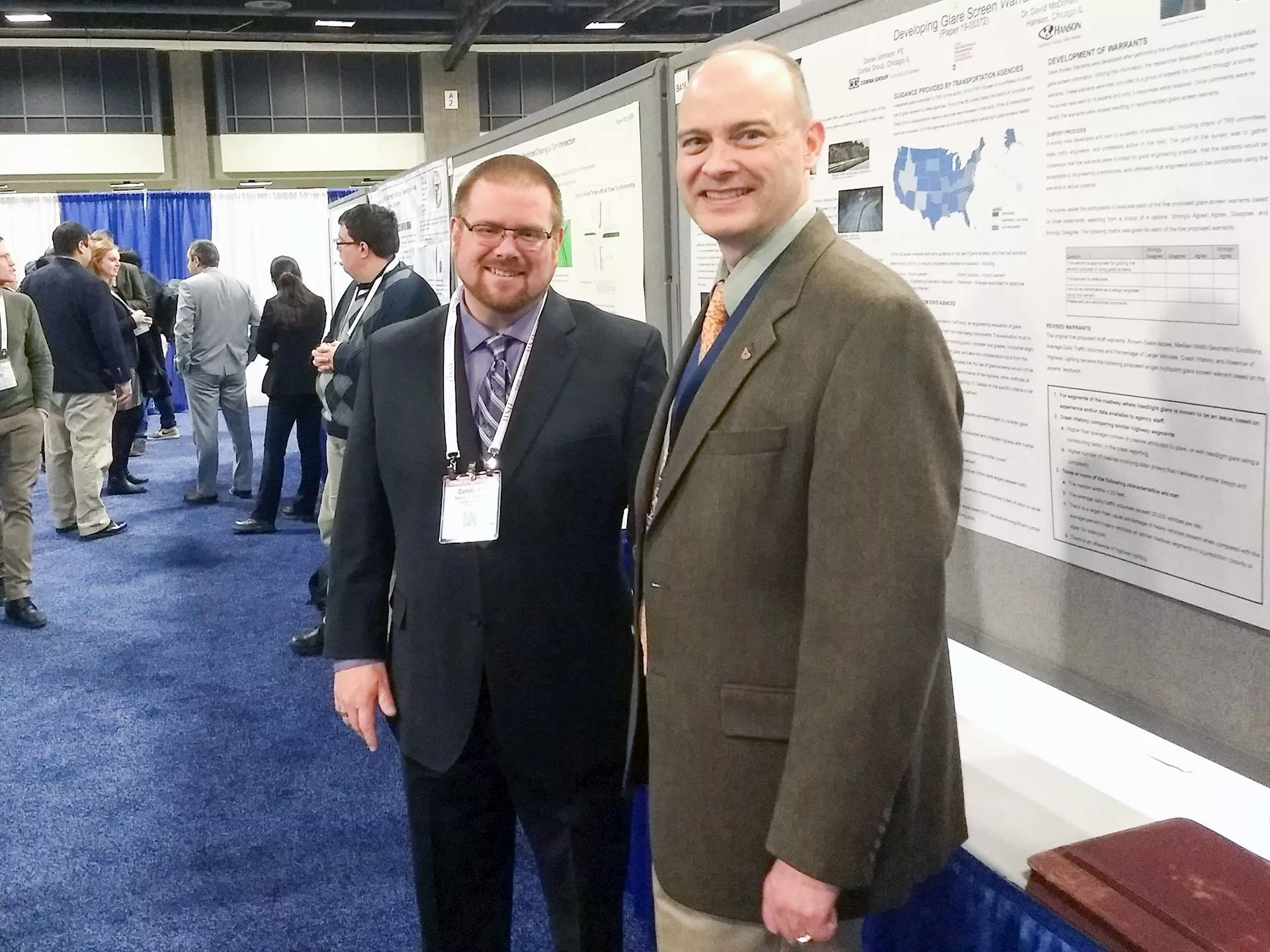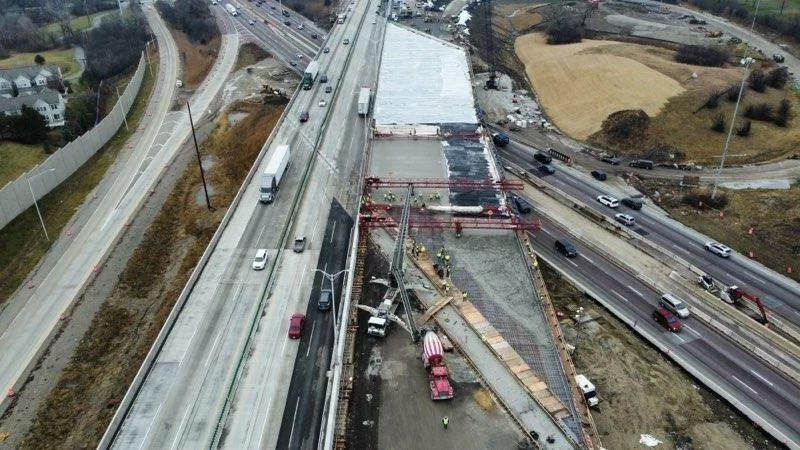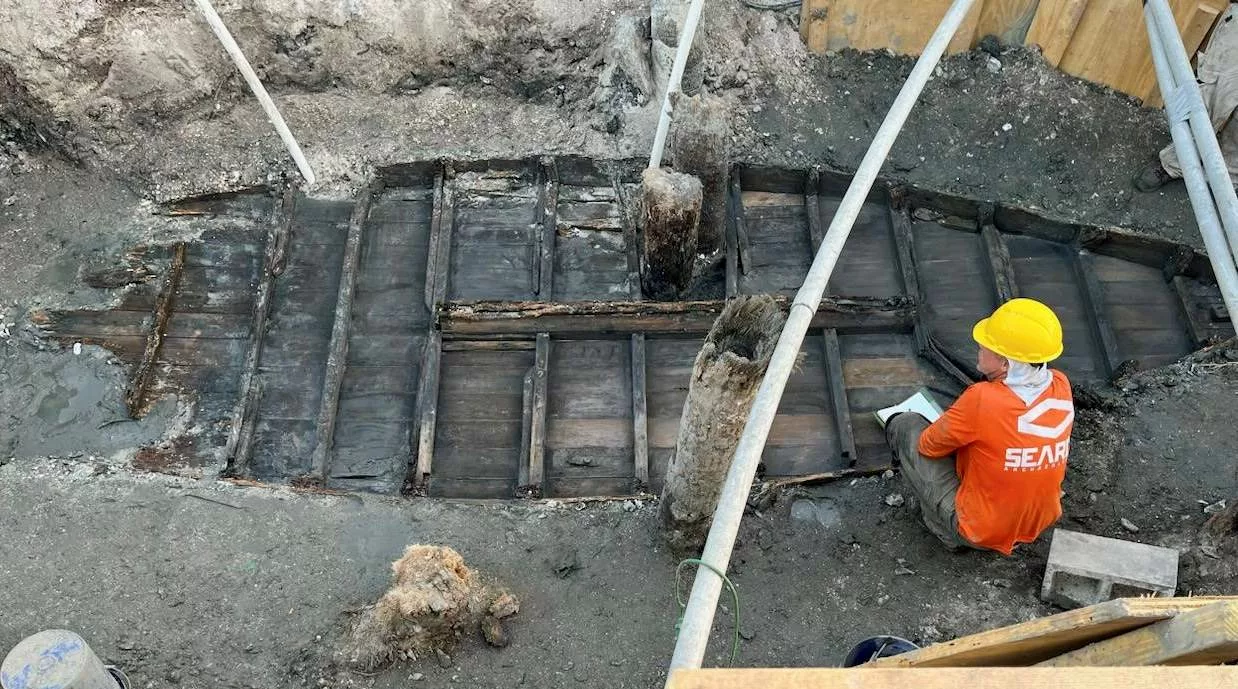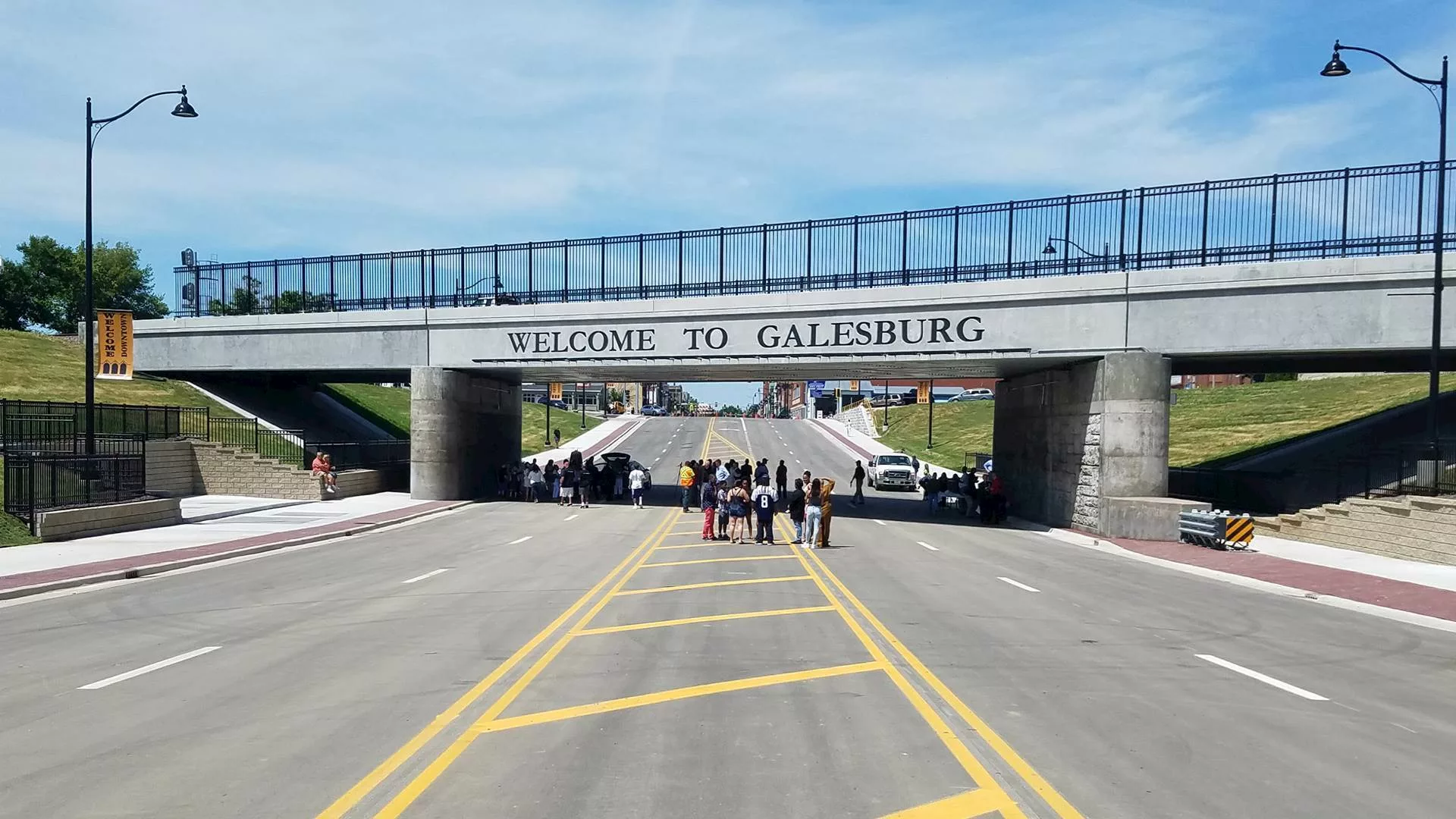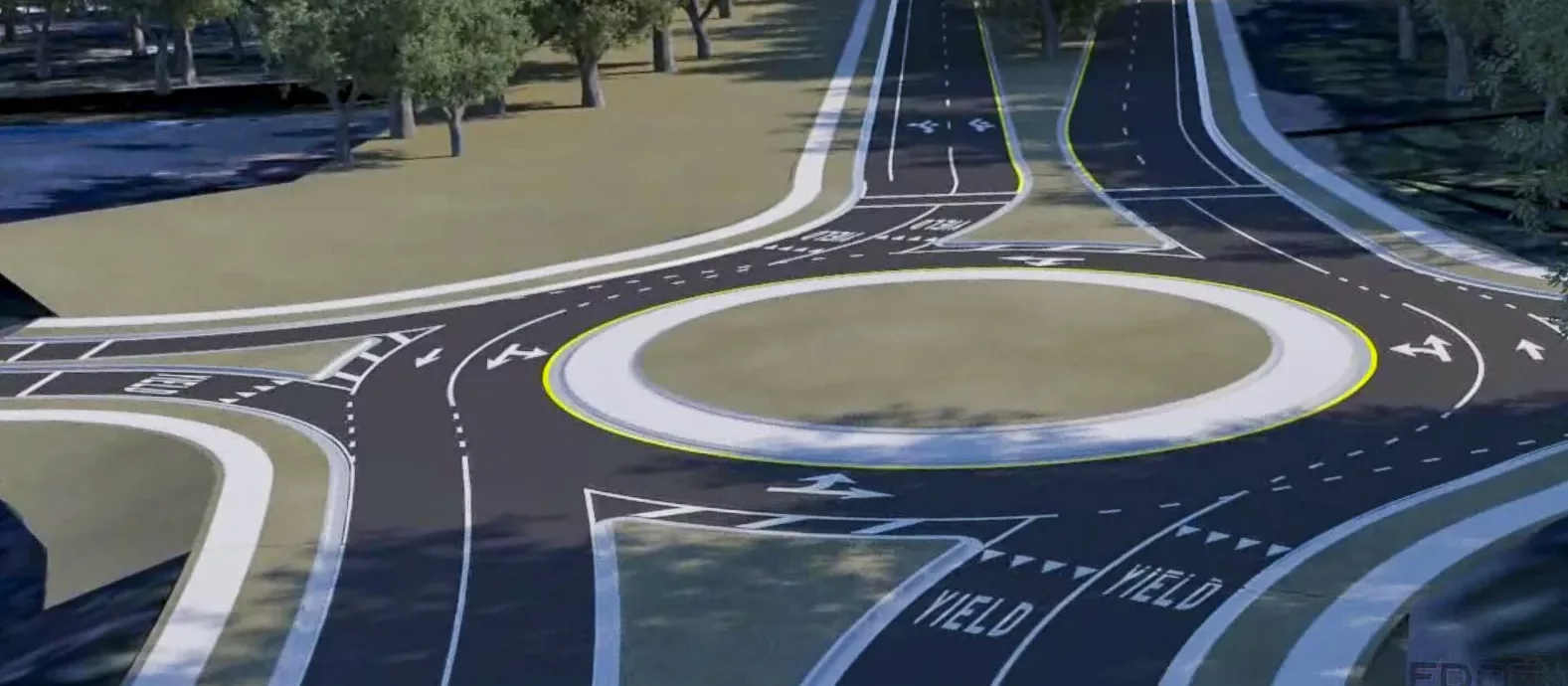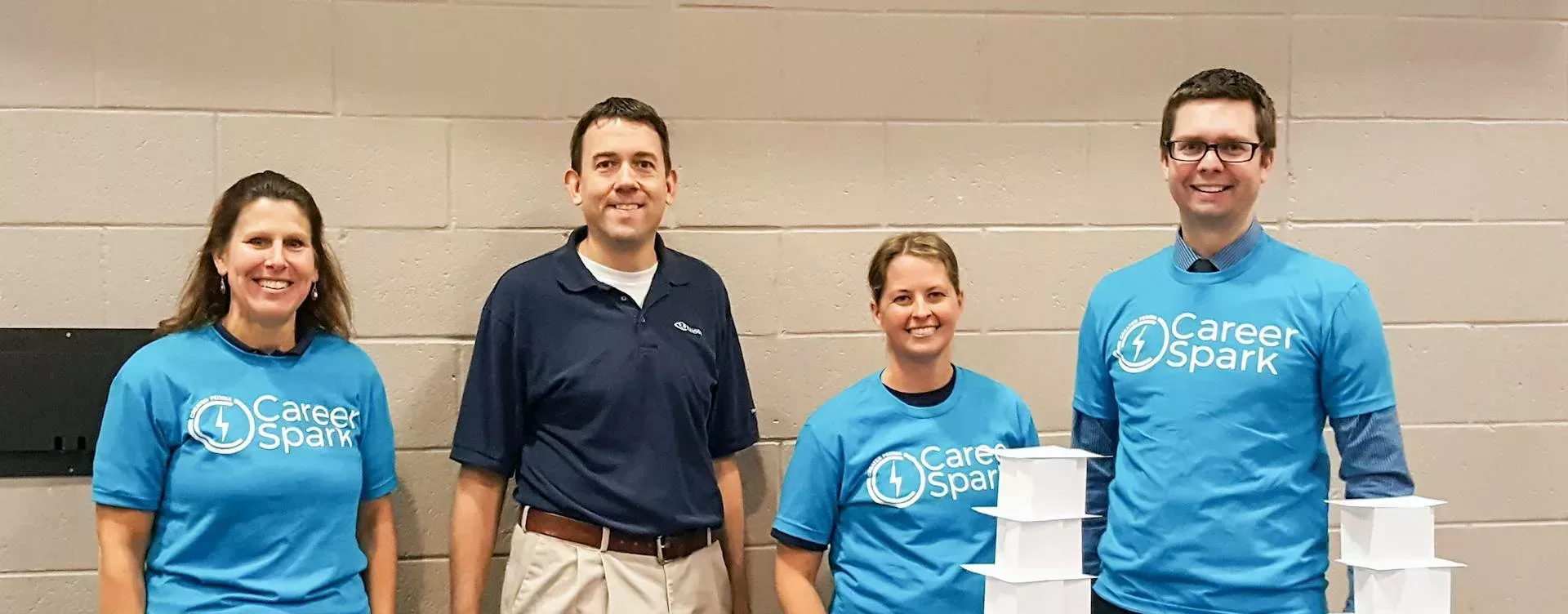Hanson employees present at the 2021 Transportation Research Board Annual Meeting
By David McDonald Jr., P.E., PTOE, Ph.D.
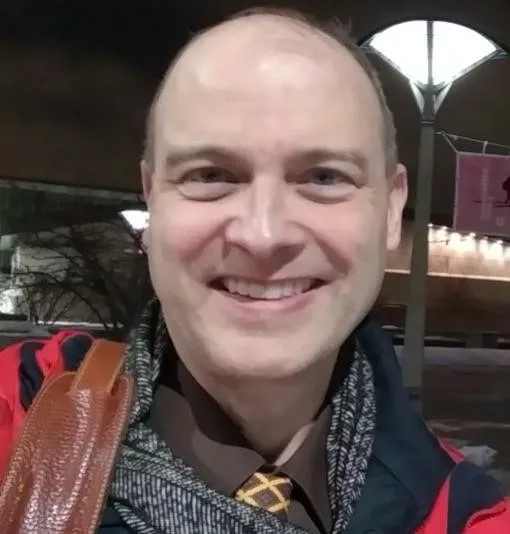
The pandemic has not slowed down the advancement of technology. Transportation research has continued. Thousands of researchers, engineers, scientists, planners and designers participated in the 2021 Transportation Research Board (TRB) Annual Meeting in January. Hanson employees contributed to this important conference through sessions, workshops, committee meetings and by leading subcommittees. Hanson staff presented several papers in multiple sessions during the virtual conference.
Senior transportation engineers Bikram Wadhawan, P.E., PTOE, and Kavita Parikh, P.E., PTOE, who work at Hanson’s Jacksonville, Florida, office, presented “Analysis of Complex Weaves in Managed Lanes” during a poster session Jan. 25. They were joined during the presentation by Amy Causseaux from the Florida Department of Transportation and Maria Overton, P.E., CPM, from CTS Engineering Inc.
Session focuses on design and performance
Since 2016, I have been evaluating the impacts highly automated vehicles (AV) will have on our roads, including how these vehicles could influence road design. My paper and presentation for this conference focused on how the AVs may perceive and react faster than a human driver and how they may be able to establish precise vehicle operational characteristics, such as speed or acceleration and deceleration rates. Using these vehicle advancements, several important design parameters were examined that depend on these abilities. If we were to design for a fully automated vehicle, the following impacts were described:
- Ramp terminals with acceleration lanes and ramp deceleration lanes could be much shorter in length, saving on pavement and land-related costs.
- Crest vertical curves may switch from sight line control to passenger comfort control. However, if sight lines were still to be a controlling feature, sharper curves would be a possibility, because stopping sight-distance requirements would be much less for an AV over a human-driven vehicle.
- At-grade rail crossing design with AVs would impact sight triangle requirements and eliminate much of the current corner clear area requirements. The crossing road guidance to cross perpendicular to the tracks would not be as critical.
From this research, intersection sight distances are likely to be affected by AVs as well, because of the similarity of sight triangle requirements explored with at-grade rail design.

Exploring lessons learned in roadway design
The spotlight theme for TRB’s 100th annual meeting was “Launching a New Century of Mobility and Quality of Life.” TRB also found ways to explore some of the important findings from its first 100 years.
That theme fit well with the second paper I presented on lessons learned over my 30 years of working in the transportation industry. During a lectern and poster session, I highlighted some of these lessons learned, with the hope that the next generation of roadway engineers and designers will benefit and pick up a nugget of knowledge or two they can use. Highlights included understanding the design assignment, maintaining clear communications, providing the expected deliverable, thinking ahead, preparing documentation (design and review) and exploring lessons learned related to roadway plans, profiles, sections and earthwork.
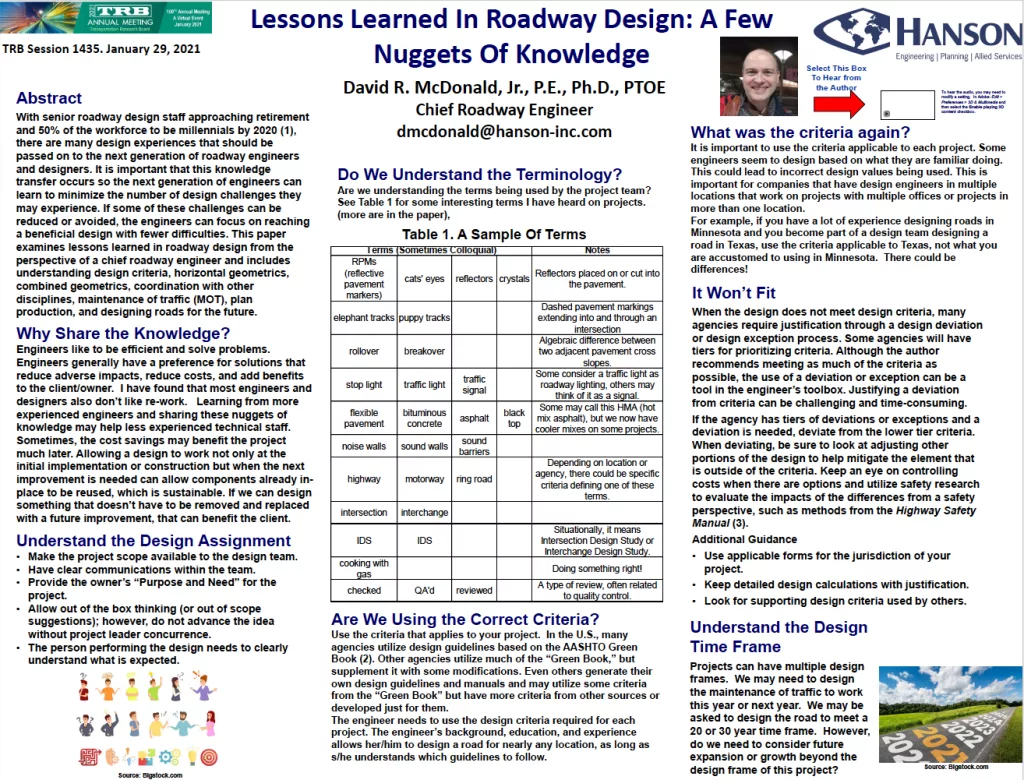
I presented my technical paper, “Lessons Learned in Roadway Design: A Few Nuggets of Knowledge,” at the Transportation Research Board’s (TRB) virtual 2021 Annual Meeting Jan. 29. The full presentation is available on Hanson’s YouTube channel.
Both papers and presentations have been selected for presentation to the European engineering community in summer 2022 as part of the 6th International Symposium on Highway Geometric Design, featuring the 6th Urban Street Symposium, in Amsterdam.
David McDonald Jr., P.E., PTOE, Ph.D., is a vice president, roadway discipline manager and chief roadway engineer at Hanson. He has been with the company since 2002. Contact him at dmcdonald@hanson-inc.com.
